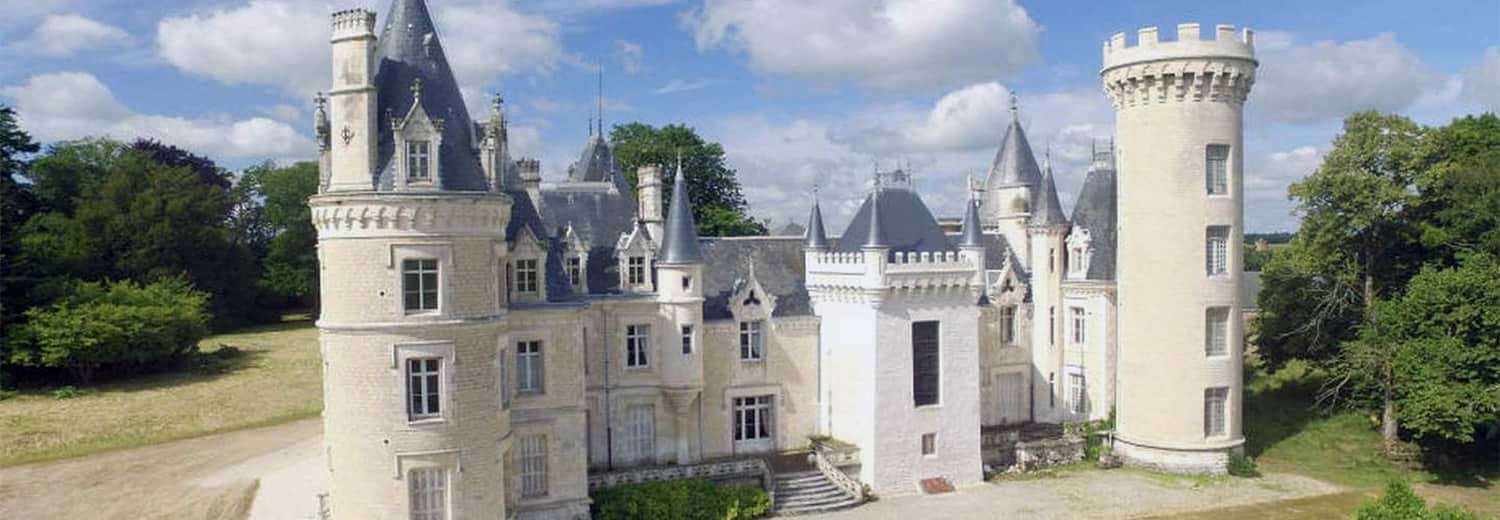GET A QUICK, FREE QUOTE
Rated 'Excellent'
on Trustpilot
ECMT International
Removals Permit
British Association
of Removers
Eco Friendly
Removals
Our Removals Service Includes…
For removals to and from Ruffec.
Call Now 0808 175 1966
Ruffec
The home of a Resistance movement where the sun shines for hours longer
The site of a gripping Resistance rescue that was immortalised in film is popular place to settle for British expats.
During the Second World War, Ruffec, in the Charente Department, was at the centre of Resistance for the evacuation of the Allied airmen to Spain.
The city was the place of rescue of the two heroes of Operation Cockleshell, whose story was told in the British film The Cockleshell Heroes.
The film dramatises Operation Frankton, a raid on German cargo shipping by British Royal Marines in December 1942, when Special Boat Service commandos infiltrated Bordeaux Harbour using folding canoes.
It was box office hit in 1956.
In this raid, 10 men canoed to Bordeaux overnight, to attack docked cargo ships with limpet mines and then escape overland to Spain. Only two of the 10 men who launched from the submarine survived the raid. Of the other eight, the Germans executed six and two died from hypothermia.
Ruffec used to be a country of groves devoted to mixed farming. It was the point of exchange between livestock products from the east of the area and crops from the west.
Since the Second World War, the Ruffécoises have concentrated on growing cereals and corn fields spread from the bottom of the valleys to the limestone plateaus.
Ruffec is known for its lovely Saint-André church and square, and is often used as a stopover by travellers on the road from Paris to Spain between Poitiers and Angoulême.
The districts outside the city centre are Poultrie and Chez Périllaud to the north, the industrial zone to the west near the station, Notre-Dame des Vignes to the south, and the park at the foot of the old castle.
There is a small old quarter, Pontreau and just outside the town there are a few hamlets, such as Nouzières, les Gordins near the Ruffec forest and Pérideau.
Ruffec enjoys a bit more sunshine than the national average – and a little more rain.
It has two flowers in the France in Bloom awards and enjoys a busy market days every Wednesday and Saturday, plus fairs on the 13th and 28th of each month.
Its 12th century Saint-André parish church is a jewel in its crown. The facade is Romanesque, and features a door with three ornate scrolls and cords. Two wings were added in the 15th century. The church was rebuilt in the 17th century after a fire.
The remains of a disused church, Chapelle Saint-Blaise, can be found not far from the old town, rue du Pontreau. The city also has an old quarter between the town hall and the church, as well as a castle on a hill.
Ruffec, despite being relatively small, has been home to more than its fair share of notables over the years, including a disgraced diplomat, a composer and an explorer.
They include:
Louis de Rouvroy (1675-1755), Duke of Saint-Simon, Marquis de Ruffec, memorialist – and his granddaughter, Marie-Christine de Rouvroy, whose name is given to a rose.
Diplomat Charles-François de Broglie (1719-1781), Marquis de Ruffec, head of the King’s Secret, retired to Ruffec after his disgrace.
Pierre-Armand Pinoteau (1769-1834), general of the armies of the Republic and the Empire, was born and died there.
François Laroche (1775-1823), general of the armies of the Republic and the Empire.
Jean Gasztowtt (1802-1871 in Ruffec), participant in the uprising of 1831 and Polish emigrant.
Georges Guilhaud (1851-c. 1910), composer, born in Ruffec.
Ferdinand de Béhagle (1857-1899), merchant and explorer, born in Ruffec.
Célestin Sieur (1860-1955), French military surgeon. General inspector. President of the National Academy of Medicine, buried in Ruffec
Madeleine Coudray (1907-1978), French writer, author of detective novels, born in Ruffec.
Paul Chauvet (1904-2007), colonial administrator.
Daniel Barjolin (1938-), cyclist.
Anne Charrier (1974-), French actress, born in Ruffec.
Steeve Barry (1991-), rugby union player and international rugby sevens player, born in Ruffec.
History of Ruffec
Ruffec has been a busy and prosperous city for more than 1,000 years.
Between 995 and 1028, Guillaume IV Taillefer, Count of Angoulême, received the domain of Ruffec from his close friend the Duke of Aquitaine – William the Great.
Ruffec had its own Mediaeval court – a viguerie – which dispensed local justice.
A castle was built here and town walls, however these are long gone.
Charles VII and his son, the future Louis XI, visited Ruffec for Easter in 1443. Louis was almost killed there during a boat trip on the Charente.
In 1548, during the salt tax protests, insurgents led by Boisménier and his lieutenants moved towards Ruffec, destroyed the salt granary and engaged in looting. They were arrested in Saint-Amant-de-Boixe on their return.
In the 19th century, much progress was made in Ruffec. Roads were built, plus a city hall, a granary, a market and a railway station. Gas and running water were installed.
In the first half of the 20th century, Ruffec station was the starting point of two railway lines: the line of Roumazières and online Niort.
At that time, grain fairs were held on the 28th of each month and Ruffec became known for its partridge pâtés with truffles.
In the 20th century, despite the two wars, Ruffec grew and schools, colleges, high schools, stadiums, swimming pools, a hospital, sanitation, cinemas and a cultural hall were all built to serve the town’s people.
Removals service near Ruffec
Whatever your removal needs we can handle it – we’ve been moving people for nearly 50 years and know how to deal with any situation.
We are fully insured and have a great team to help reduce the stress of moving.
You can call us on 0800 917 1015 or email enquiries@armishaws.com for a quote.
Allow us to move you to or from anywhere in the UK or Europe. Our staff have been well trained in all aspects of moving homes and businesses.
Armishaws has held the BSEN 12522 certificate since 1999.
Why Choose Armishaws
- Any distance
- Any amount and weight
- Global shipping
- Professional, easy removals to France, Spain and Portugal
- Containerised storage
- Friendly, bespoke service
- Packing services and export wrapping
- Family-owned and run for nearly 50 years
- Free surveys and same day quotes
Armishaws have multiple branches and trading partners all over the country. This makes us the best local choice for all removals in Ruffec. We have a huge amount of experience in helping with moves all over the world.
For Free Advice and a Quotation call 0800 917 1015
Why move to Ruffec?
The English have long been associated with Ruffec, from our brave men setting off from there on a doomed mission in the Second World War to scores of expats settling in the area in the present day.
This is a lively community with lots to do and see, in a lovely climate with hours and hours of sunshine, while at the same time not being too hot for comfort.
Properties in Ruffec
Check out homes for sale in the Ruffec area on rightmove.co.uk.
Transport Links
Ruffec is the capital of the canton of North Charente, not far from the Vienne department, located 25 miles north of Angoulême and 37 miles south of Poitiers.
The main road is the N 10 from Angoulême to Poitiers.
Ruffec is an important crossroads of departmental roads. The D 736 by the southwest towards Rouillac and Cognac. The D 740 is the secondary road from Limoges to Niort via Confolens, Ruffec and Chef-Boutonne – it also goes towards the ocean via Saint-Jean-d’Angély. The D 26 goes north-east towards Sauzé-Vaussais and Niort, and the D 8 to the north-east goes towards Civray.
Ruffec also has a station on the Paris to Bordeaux line, served by TER trains to Angoulême and Poitiers.
Schools near Ruffec
Ruffec has a secondary school, a vocational high school, an elementary school and a nursery school. Private education is provided by the Sacré-Cœur school and college as well as the Roc-Fleuri multi-purpose private high school offering courses from 4th to BTS and a general bac.














